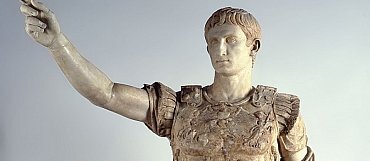14-2014 d.C. : the bimillenary from the death of Augustus in Campania

Naples celebrates until May 4, the Emperor Augustus, who gave a deep impression to the fortunes of Campania, Italy and the Mediterranean, with the exhibition "Augustus in Campania. From Octavian to Divine Augustus. 14-2014 a. C.". The initiative celebrates the figure of the Roman emperor 2000 years after his death at Nola, through a route that winds through 11 rooms of the National Archaeological Museum in Naples, describing places that saw him as main character in the ascent to power.
The period of the principality of Augustus was one of the most prosperous of the antiquity. The emperor settled in Campo Misenum the base of the Roman fleet in the Tyrrhenian Sea, built great works in all cities, and improved the road network. Many cities were living in that time their moment of maximum splendor in terms of economic and construction. Among the most important public interventions, dating at that time, should be counted the Augustan aqueduct, which fed from the sources of Serino and, with a run of 96km mostly underground, carried water in public and private fountains and cisterns providing drinking water to several cities including Naples, Pozzuoli, Baia, Nola, Acerra and Pompeii.
But the myth of Augustus is also based on numerous legends born around him. It is said for example that even the frogs obeyed him and he received signs and premonitory dreams. After his death he was proclaimed divus and became the subject of religious rites, for him were erected temples where the priestly colleges devoted festivities at the day of his birth.
The experience in Campania began for Augustus in Capri, where he landed for the first time in the 29 b.C. returning from the East, and where he spent long periods during his principality, giving an important contribution in making famous the wonders of the coast.
The conclusion took place in Nola where he died on August 19, 14 a.C., struck by illness while traveling, and where he is still remembered with a bronze statue dedicated to him and placed in the cathedral square of San Felice in Nola.
The current exhibition in Naples opens at the entrance with a statue of Augustus that "welcomes" the public, to the rediscovery of the strong bond that linked the emperor to the history of Campania, in a path that winds through 11 rooms: the celebration of the imperial couple (Augustus and Livia), description of the Julio-Claudian dynasty, till the great political and social changes following the Augustan pax.
Over hundred works, including statues, marble slabs, plasters Pompeii, vases and other objects of daily life, enrich the exhibition that traces the life of a man who changed - in over forty years - forever the history of the empire. The highlight of the Neapolitan exhibition comes from valuable pieces that show a connection between the imperial power and the territories of Campania. Works such as the Crater of Gaeta, the Mars of Cuma and the inscription of the Olympic Games found during excavations of the Naples metro, restored and displayed specifically for the show.











